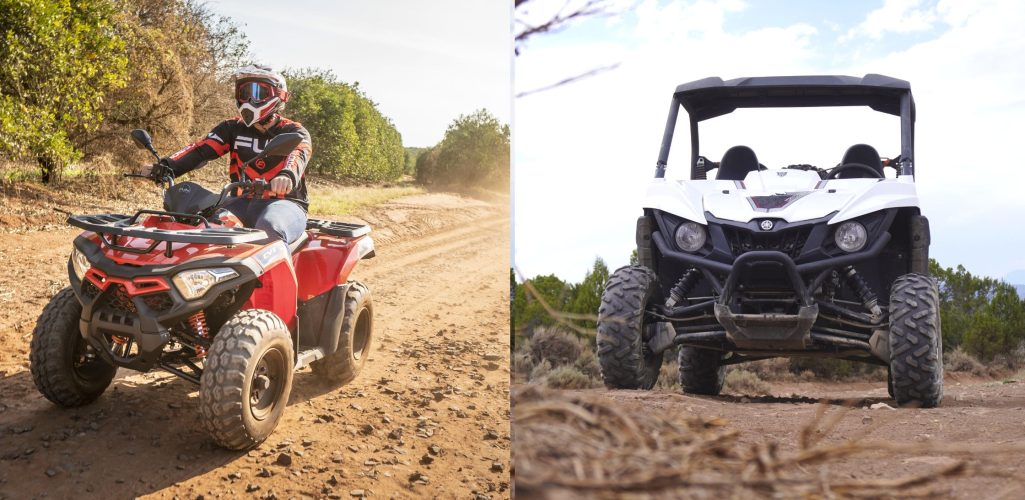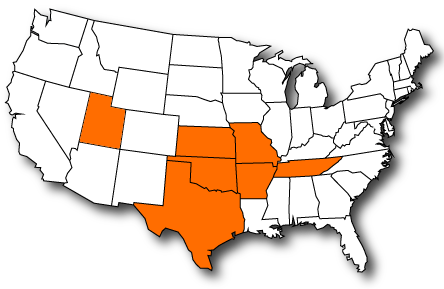Are you looking to purchase an off-road vehicle for outdoor adventures, work, or recreation? Choosing between an ATV and a UTV can be a tough decision. Both have their strengths and weaknesses and understanding the key differences between the two can help you make an informed decision.
In this blog post, we’ll explore the differences between ATVs and UTVs in Arkansas, the various use cases for each, and factors to consider when choosing which one to purchase. Whether you’re planning to use it for off-road exploration, hunting, farming, or utility and work, we’ll help you decide which one is right for you.
Key Differences Between ATV vs UTV
A. Definition
An ATV, or all-terrain vehicle, is a small, single-rider vehicle. ATVs are designed for off-road use. It typically has a straddle seat, and handlebars for steering, and is powered by a small engine that drives the rear wheels. ATVs are known for their agility, making them ideal for navigating rough terrain such as mud, sand, and rocky trails.
On the other hand, A UTV (utility terrain vehicle), is a type of off-road vehicle that has two or four seats, a steering wheel, and a roll cage for safety. UTVs are built for work and recreation, with more space for cargo and passengers than ATVs.
B. Design and Size
One of the key differences between ATVs and UTVs is their size. ATVs are generally smaller and more compact than UTVs, typically only accommodating one rider. They have a narrower width and shorter wheelbase, which makes them more agile and better suited for tight turns and navigating narrow trails. In contrast, UTVs are larger and can accommodate more passengers, usually two to four people.
They have a wider stance and longer wheelbase, which provides more stability and makes them better suited for hauling cargo and people over rough terrain. So, in summary, ATVs are smaller and designed for solo riders, while UTVs are larger and designed for multiple riders and cargo hauling.
C. Engine and Power
Another key difference between ATVs and UTVs is their engines and power. ATVs typically have smaller engines, ranging from 150cc to 1000cc, which are designed to provide quick acceleration and agile handling. They are generally faster and more maneuverable than UTVs but have less power and torque for hauling heavy loads.
In contrast, UTVs have larger engines, typically ranging from 500cc to 1000cc, which provide more power and torque for hauling heavy loads and towing. UTVs also have more advanced transmission systems, such as automatic or semi-automatic transmissions, which provide greater control and flexibility when navigating challenging terrain.
How to Decide Between an ATV vs UTV: Key Factors to Take into Account
Intended use
Determine what the primary use of the vehicle will be. If you need a vehicle for off-road exploration, racing, or solo riding, an ATV may be the better choice. If you need a vehicle for utility, work, or carrying passengers, a UTV may be the better choice.
Terrain
Consider the type of terrain you will be driving on. If you’ll be navigating narrow, winding trails or rocky terrain, an ATV may be more suitable. If you’ll be driving on open fields or flat terrain, a UTV may be the better choice.
Capacity
Consider the number of passengers or cargo you need to transport. If you need to carry more than one passenger or haul heavy cargo, a UTV may be more suitable. If you only need to carry one person or light cargo, an ATV may be the better choice.
Budget
Consider your budget when deciding between an ATV and UTV. ATVs are generally less expensive than UTVs, but UTVs offer more space and features, which may be worth the extra cost.
Safety
Consider the safety features of each vehicle, including roll cages, seat belts, and other safety equipment. UTVs typically offer more safety features than ATVs, making them a safer option for hauling passengers or navigating challenging terrain.
Conclusion
When it comes to off-roading with an ATV or UTV, safety should always be a top priority. These vehicles can be fun and exciting, but they can also be dangerous if not operated safely. It’s important to wear proper safety gear, such as helmets, goggles, and protective clothing, and to follow all safety guidelines and regulations.
Additionally, it’s important to have ATV insurance coverage to protect yourself and others in the event of an accident. Off-road vehicles are often excluded from standard auto insurance policies, so it’s important to check with your insurance provider and ensure that you have adequate coverage in Arkansas. By prioritizing safety and insurance, you can enjoy the thrill of off-roading with peace of mind. Get a free quote today!


